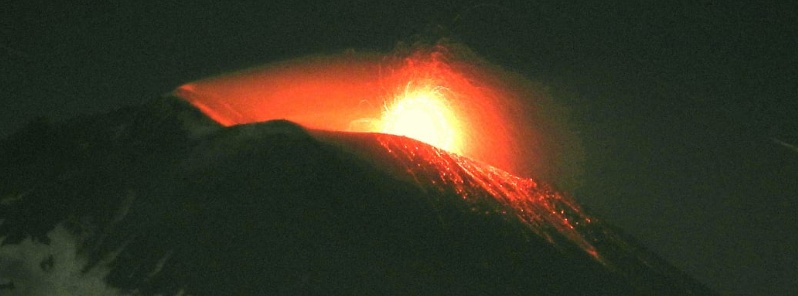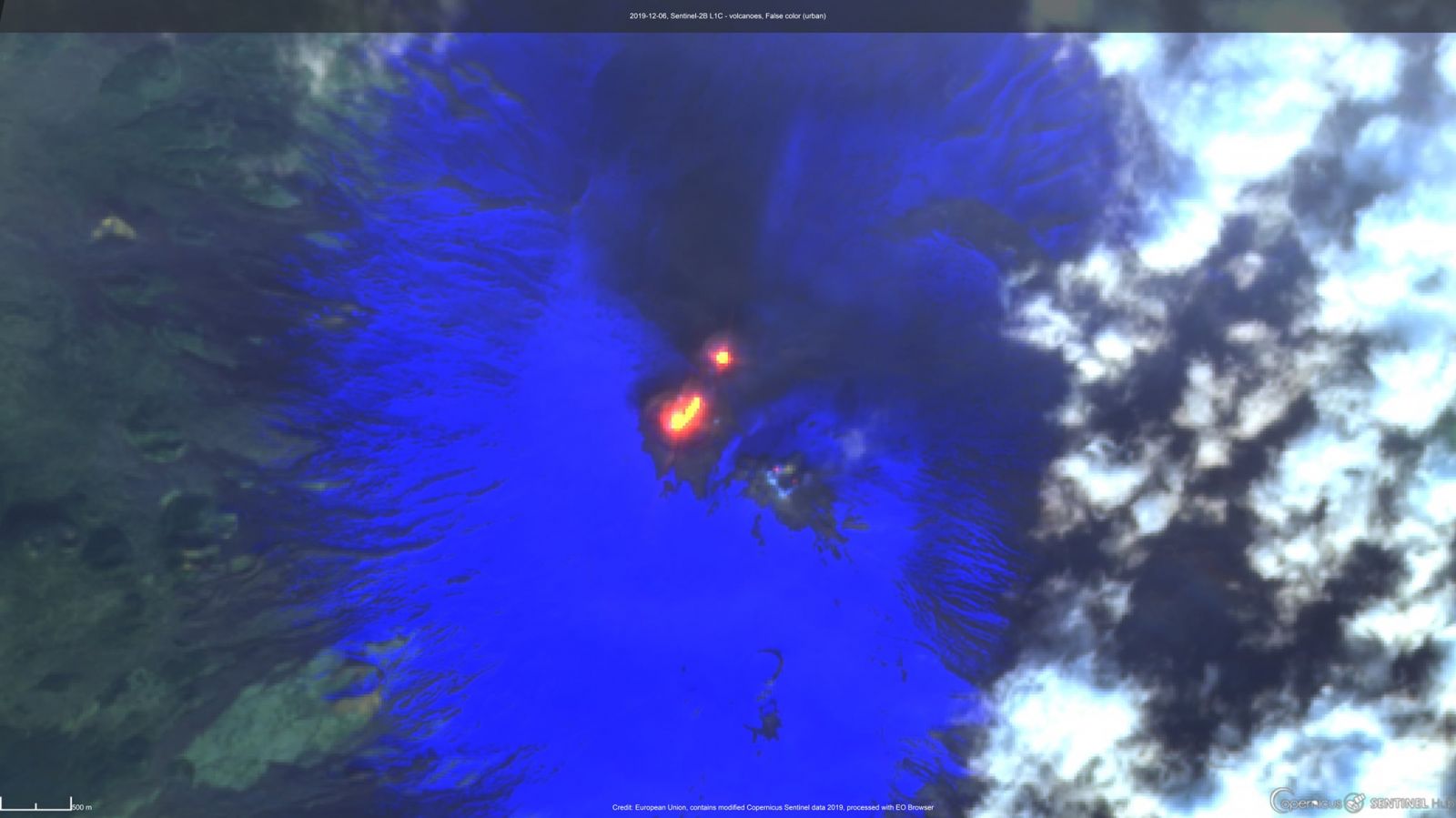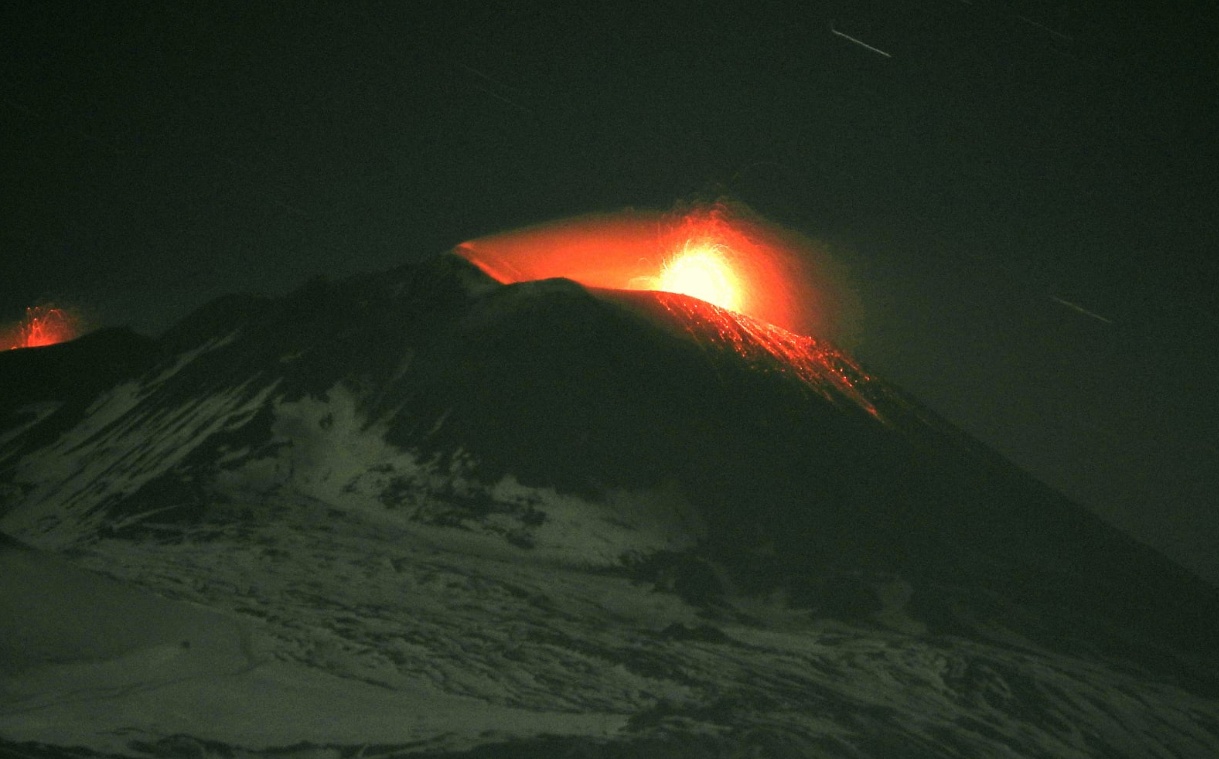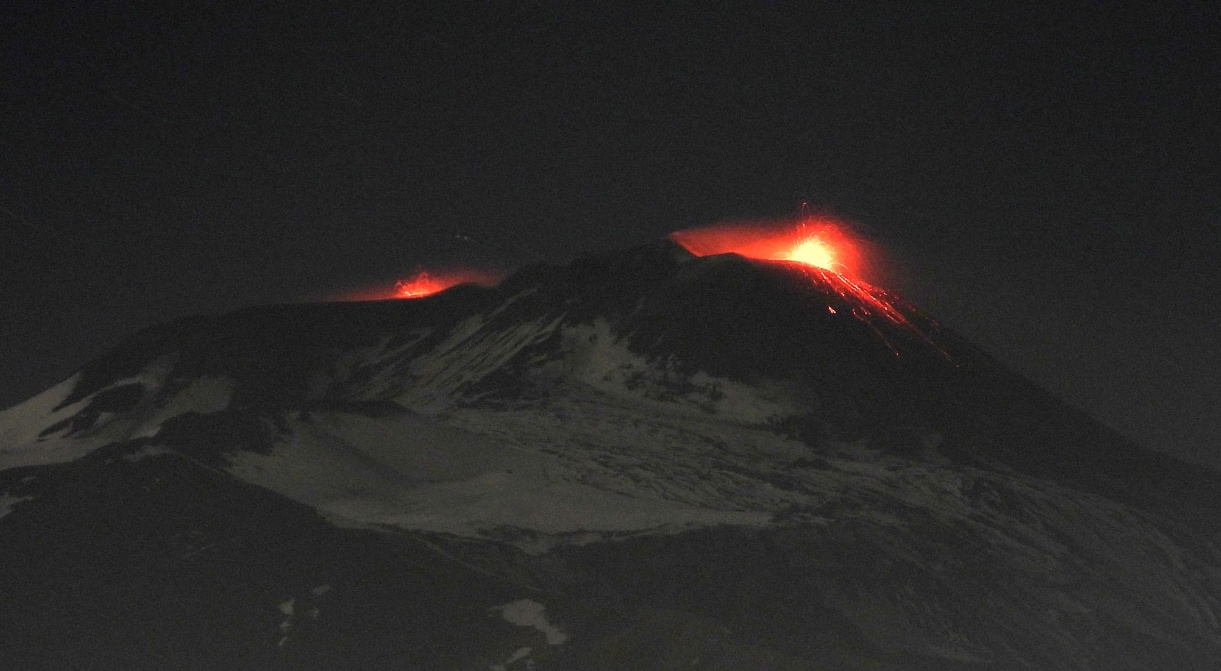Intensification of Strombolian activity at Etna volcano, Italy

Video surveillance cameras show a gradual intensification of Strombolian activity at the New Southeast Crater of Etna volcano, Italy, beginning at 18:00 UTC on December 6, 2019.
The activity was already underway at about 16:00 UTC, producing small and discontinuous explosions, INGV reports.
Pyroclastic material is ejected on the slopes of the cone.

Etna as seen by ESA/Sentinel-2 on December 6, 2019
Meanwhile, intracrater Strombolian activity is continuing at the Voragine and Bocca Nuova craters.
No significant variations are observed thus far in the volcanic tremor amplitude.
The photos below were taken on the evening of December 6 from Tremestieri and show the strombolian activity at New Southeast Crater (at right), and small Strombolian explosions at the Voragine crater (at left).


Images captured on December 6, 2019. Credit: INGV
Geological summary
Mount Etna, towering above Catania, Sicily's second-largest city, has one of the world's longest documented records of historical volcanism, dating back to 1500 BCE. Historical lava flows of basaltic composition cover much of the surface of this massive volcano, whose edifice is the highest and most voluminous in Italy.
The Mongibello stratovolcano, truncated by several small calderas, was constructed during the late Pleistocene and Holocene over an older shield volcano. The most prominent morphological feature of Etna is the Valle del Bove, a 5 x 10 km (5.1 x 6.2 miles) horseshoe-shaped caldera open to the east.
Two styles of eruptive activity typically occur at Etna. Persistent explosive eruptions, sometimes with minor lava emissions, take place from one or more of the three prominent summit craters, the Central Crater, NE Crater, and SE Crater (the latter formed in 1978). Flank vents, typically with higher effusion rates, are less frequently active and originate from fissures that open progressively downward from near the summit (usually accompanied by strombolian eruptions at the upper end).
Cinder cones are commonly constructed over the vents of lower-flank lava flows. Lava flows extend to the foot of the volcano on all sides and have reached the sea over a broad area on the SE flank. (GVP)
Featured image credit: INGV

Commenting rules and guidelines
We value the thoughts and opinions of our readers and welcome healthy discussions on our website. In order to maintain a respectful and positive community, we ask that all commenters follow these rules.